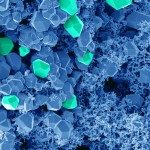About
Mardi 7 mars 2017 à 14h00
Salle 014-015 – RDC bâtiment Lwoff
Dr. Dirk LINKE
University of Oslo, Department of Biosciences
Trimeric Autotrasnporter Adhesins: Stucture, Function, and Evolution
Adhesion of bacteria to surfaces is essential for many aspects of microbial life: surface recognition and attachment, biofilm formation, and pathogenesis. Adhesion to host tissues is frequently among the first steps in host colonization by pathogens, and adherence is often an essential property for virulence. Adhesins must reach the bacterial cell surface to fulfill their function. Numerous, sometimes highly specific export systems exist for this purpose. In autotransporter proteins of Gram-negative bacteria, export through the outer membrane is mediated by a C-terminal membrane pore domain that auto-exports the N-terminal passenger domain of the same polypeptide chain [1]. Trimeric autotransporter adhesins (TAAs) comprise a widespread family of adhesive molecules in Gram-negative bacteria, many of which are important virulence factors [2]. The are also called Type Vc autotransporters (Figure 1). The prototypical trimeric autotransporter is the Yersinia adhesin YadA from Yersinia enterocolitica, which mediates attachment to collagen and other extracellular matrix (ECM) molecules, promotes serum resistance and mediates autoagglutination.
In recent work, we showed that the structure of the autotransport domain of YadA contains a conserved region of small residues [3,4], that we are currently exploiting for mutational studies. We have constructed mutant YadA variants stalled in autotransport that will help us to elucidate the export mechanism through the bacterial outer membrane.
References
[1] Linke et al., Trends in Microbiology, 2006
[2] Leo et al., Philosophical Transactions of the Royal Society B, 2012
[3] Shahid et al., Nature Methods, 2012
[4] Shahid et al., Angewandte Chemie 2015
Contacts : Benjamin Bardiaux
Unité de Bioinformatique Structurale

